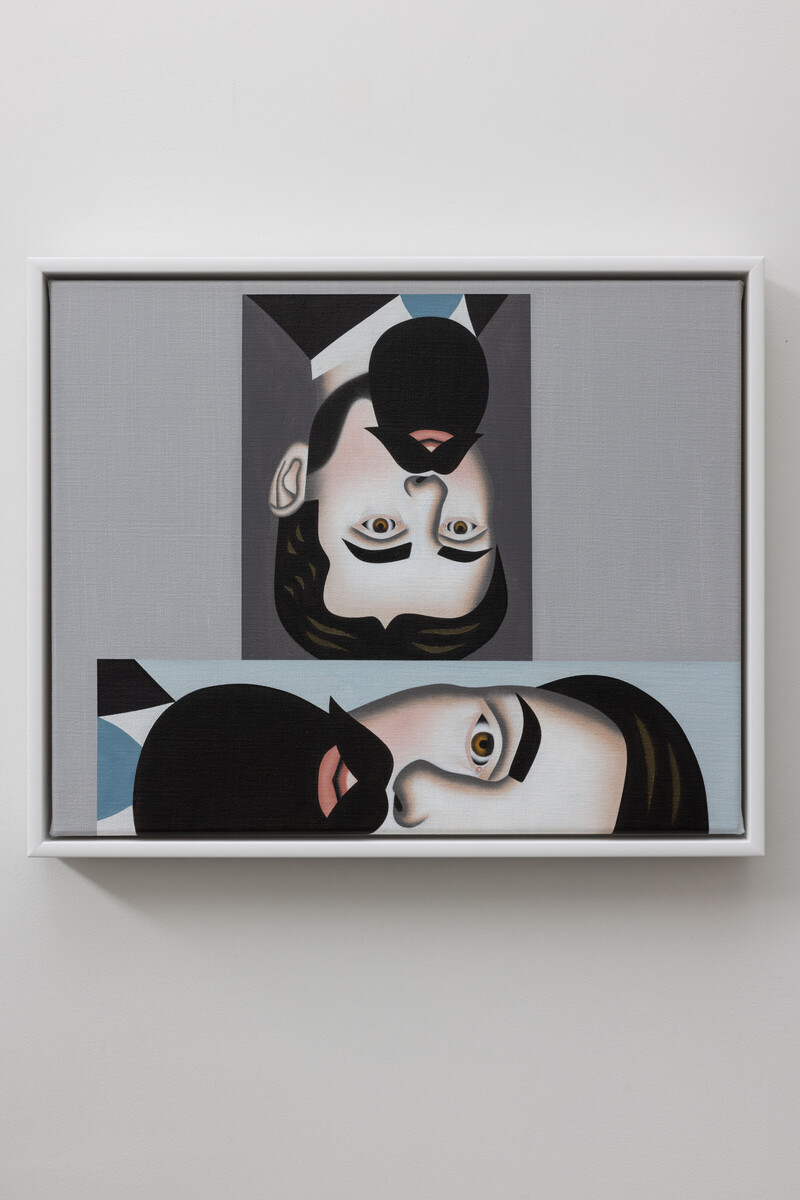In these works Gavin Hurley pieces face parts / head parts in elegant juxtaposition, bring to life in this case “portraits” of two prominent 19th century men.
Both of these figures the artist has painted previously, however here they are composed, stacked actually upside down upon half a head placed on their side. It’s as if to remind us that the process of painting is one of continual arbitrary adjustment, and logic does not require that things (heads) need to be seen upright. Imagine them as paintings within a painting, sitting and lying around a room or a studio.
Also of interest is that the subject here, “Butler” and “Napoleon III” were both extremely active and experienced in their respective fields, literature and politics. And this was during a period that can be described as early stages of modernism as well as the rise of industry.
In Samuel Butler’s case, writing for him was a means of reflecting upon society and its norms, commentating satirically on contemporary rule and regulation. Perhaps his most famous work, Erewhon, 1872, and written in New Zealand, eerily predicts or suggests human reliance on machines and how we could soon be superseded and governed by them.
Napoleon III, his political career saw a push for the advancement of France and in particular its capital, Paris. Notably he employed the architect Georges-Eugene Haussmann, which resulted in significant (not without strong opposition) re-building and its infrastructure from 1853-1870. Work on these projects continued until 1927, and is responsible in large part for how the city is now experienced.
Hurley presents updated versions of these figures, cut and pasted and painted. History and its relevance is fluid and perpetual in multiple directions, and for the artist presenting these forms in this way, they sort of have to be turned upside down.
